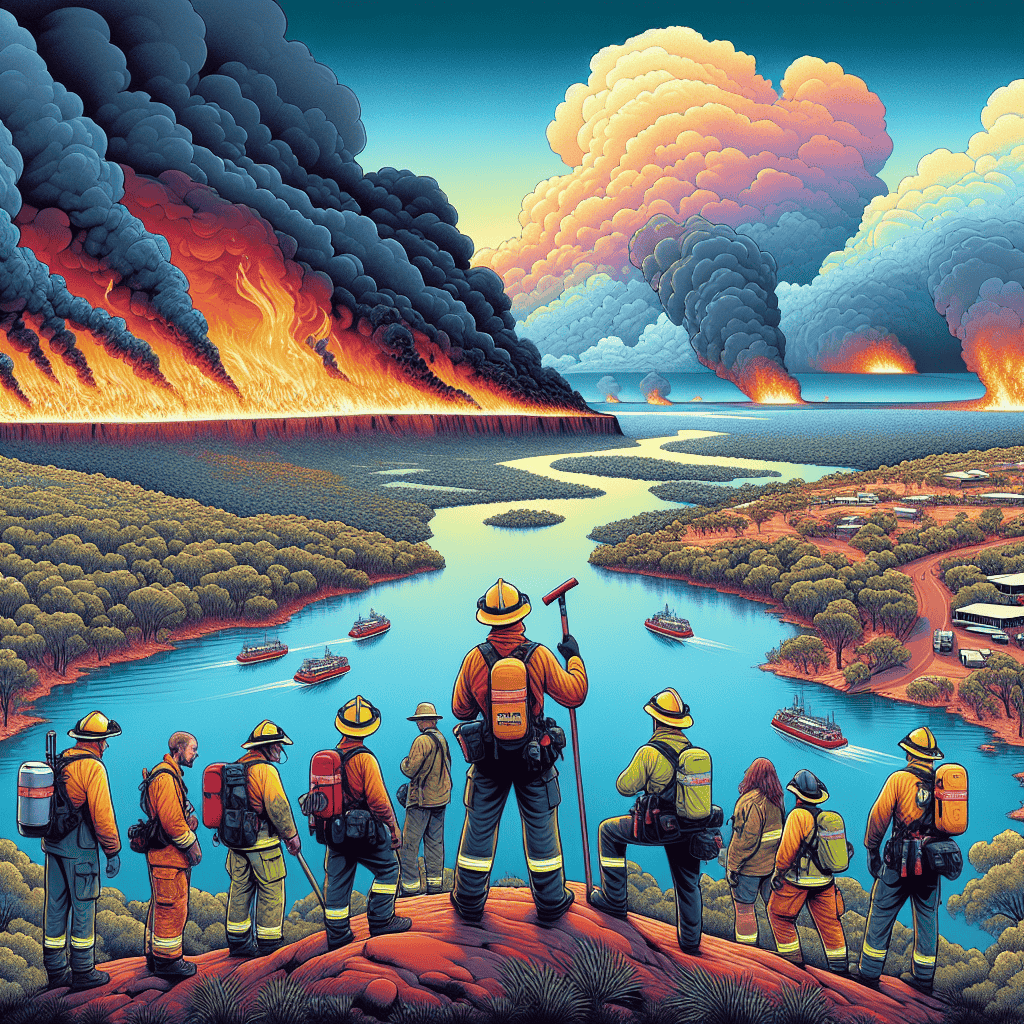Western Australia is currently battling an outbreak of emergency bushfires, with the Arthur River region experiencing some of the most devastating impacts. The fires have spread rapidly, fueled by strong winds and dry conditions, and firefighters are working tirelessly to protect lives, properties, and the environment. This blog post will break down the current situation, highlight the efforts of emergency services, and discuss the impact of these fires on the community and surroundings.
The Scope of the Emergency
The bushfires raging across Western Australia have reached crisis levels, particularly in areas around Arthur River, where emergency warnings remain in place. As of now, authorities have reported:
- Extreme fire behavior: The fires are moving quickly and unpredictably, increasing the difficulty of containment efforts.
- Significant property threats: Residents in affected areas are being urged to evacuate as their homes and livelihoods face imminent danger.
- Environmental destruction: Thousands of acres of land have been scorched, impacting native wildlife and important ecosystems.
Local officials have called for immediate action and cooperation from the public, emphasizing that the situation remains volatile and dangerous.
How Firefighters Are Responding
Firefighters and emergency teams are on the frontlines, risking their lives to control the flames and minimize damage. Here’s how they’re tackling the fires:
- Deploying resources strategically: Crews have set up firebreaks in key areas to prevent the spread of the flames.
- Aerial support: Helicopters and planes are dropping water and fire retardants to extinguish hotspots and reduce the intensity of the blazes.
- Community support: Emergency teams are visiting affected neighborhoods to ensure residents are safe and prepared for potential evacuations.
Despite these efforts, the conditions remain challenging. Dry weather and gusty winds continue to push the fires into new areas, keeping emergency crews on high alert.
Residents on High Alert
For residents living near the Arthur River area and beyond, the bushfires have created an environment of uncertainty and fear. Authorities are urging homeowners to take immediate precautions, including:
- Evacuating early: Residents in high-risk zones should leave as soon as possible to avoid getting trapped by the fires.
- Preparing homes: Removing debris, cutting down flammable vegetation, and sealing gaps in homes can help reduce fire risk.
- Staying updated: Regularly checking local news and government alerts ensures residents are informed about fire movements and safety measures.
Emergency evacuation centers have been set up to shelter those displaced by the fires, offering food, water, and emotional support during this difficult time.
The Environmental Impact of Bushfires
Bushfires don’t just cause immediate harm— their effects on the environment can last for years. WA’s current fires have already destroyed countless acres of bushland, leading to:
- Loss of biodiversity: Many animals, including kangaroos, koalas, and endemic bird species, are losing their habitats and food sources.
- Soil degradation: Heat from fires sterilizes soil and makes it harder for vegetation to regrow.
- Increased greenhouse gases: The fires release massive amounts of carbon dioxide into the atmosphere, contributing to climate change.
The recovery process will require years of rehabilitation efforts, from reforesting destroyed areas to protecting surviving wildlife from further harm.
How the Community Is Coming Together
Amid the chaos, the spirit of unity and camaraderie is shining through. Communities across Western Australia are stepping up to support affected individuals and aid emergency crews. Some of the ways people are helping include:
- Donating supplies: Locals are providing water, food, clothing, and medical supplies to evacuation centers and firefighters on the ground.
- Volunteering: Individuals are assisting with logistics, transportation, and communication efforts to ensure resources reach those in need.
- Raising funds: Fundraisers and online campaigns are collecting money to help families rebuild their lives and recover from fire-related losses.
Witnessing this collective effort serves as a reminder of the resilience and strength of the Australian community in the face of adversity.
Government and Emergency Services’ Response
The Western Australian government and emergency services have been working around the clock to address the bushfire crisis. Key actions include:
- Issuing alerts: Authorities are keeping the public informed through constant updates, maps, and evacuation notices.
- Deploying resources: Extra firefighting crews, equipment, and funding have been mobilized to combat the flames.
- Collaborating with experts: Fire authorities are working alongside meteorologists and environmental scientists to strategize containment efforts.
However, these organizations stress that addressing the fire is a joint responsibility. They urge residents to follow directives and cooperate fully with evacuation plans.
How You Can Help
If you’re looking to assist bushfire victims and emergency responders, there are several ways to make a difference:
- Donate: Many charities, such as the Australian Red Cross and Salvation Army, are collecting funds to support impacted people.
- Volunteer: If you live in a safe area, consider offering your time to assist local shelters or firefighting agencies.
- Spread awareness: Use your platform to share important updates and resources with those in affected areas.
Your contribution, no matter how small, could be a lifeline for those affected by the bushfires.
The Path Ahead
As Western Australia grapples with these bushfires, it’s crucial to remain vigilant and proactive. While firefighters and emergency crews are working hard on the frontlines, the support of the community is equally important in overcoming this crisis. Recovery will take time, but with collaboration, resilience, and determination, the region can rebuild and heal from this tragedy.
Stay safe, stay informed, and remember to reach out to help those who need it most during this challenging time.
“`


